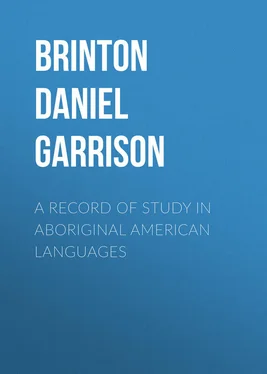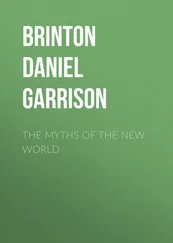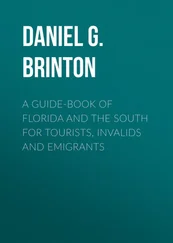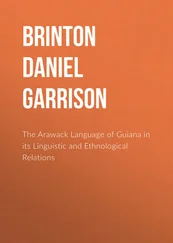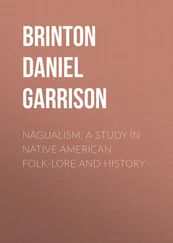Daniel Brinton - A Record of Study in Aboriginal American Languages
Здесь есть возможность читать онлайн «Daniel Brinton - A Record of Study in Aboriginal American Languages» — ознакомительный отрывок электронной книги совершенно бесплатно, а после прочтения отрывка купить полную версию. В некоторых случаях можно слушать аудио, скачать через торрент в формате fb2 и присутствует краткое содержание. ISBN: , Жанр: foreign_antique, foreign_prose, на английском языке. Описание произведения, (предисловие) а так же отзывы посетителей доступны на портале библиотеки ЛибКат.
- Название:A Record of Study in Aboriginal American Languages
- Автор:
- Жанр:
- Год:неизвестен
- ISBN:http://www.gutenberg.org/ebooks/31351
- Рейтинг книги:3 / 5. Голосов: 1
-
Избранное:Добавить в избранное
- Отзывы:
-
Ваша оценка:
- 60
- 1
- 2
- 3
- 4
- 5
A Record of Study in Aboriginal American Languages: краткое содержание, описание и аннотация
Предлагаем к чтению аннотацию, описание, краткое содержание или предисловие (зависит от того, что написал сам автор книги «A Record of Study in Aboriginal American Languages»). Если вы не нашли необходимую информацию о книге — напишите в комментариях, мы постараемся отыскать её.
A Record of Study in Aboriginal American Languages — читать онлайн ознакомительный отрывок
Ниже представлен текст книги, разбитый по страницам. Система сохранения места последней прочитанной страницы, позволяет с удобством читать онлайн бесплатно книгу «A Record of Study in Aboriginal American Languages», без необходимости каждый раз заново искать на чём Вы остановились. Поставьте закладку, и сможете в любой момент перейти на страницу, на которой закончили чтение.
Интервал:
Закладка:
Daniel G. Brinton
A Record of Study in Aboriginal American Languages
If this review of my own work in the field of American Linguistics requires an apology, I may say that the preparation of it was suggested to me by my late friend, Mr. James Constantine Pilling, whose admirable volumes on the bibliography of American Aboriginal Languages are familiar to all students. He had experienced the difficulty of cataloguing the articles of writers whose contributions extend over many years, and have been published in different journals, proceedings of societies and volumes, and was impressed with the advantage of an analytical list composed by the author himself.
With this in view, I have arranged the present survey of my writings in this branch of science, extending over a period of two score years. They are grouped geographically, and sufficient reference to their contents subjoined to indicate their aims and conclusions.
D. G. Brinton.Media, Penna., November, 1898.
I. General Articles and Works
1. The Philosophic Grammar of American Languages as set forth by Wilhelm von Humboldt; with the translation of an unpublished Memoir by him on the American Verb. pp. 51. In Proceedings of the American Philosophical Society, 1885.
2. On Polysynthesis and Incorporation as characteristics of American Languages. pp. 41. In Proceedings of the American Philosophical Society, 1885.
3. Characteristics of American Languages. American Antiquarian , January, 1894.
4. On certain morphologic traits in American Languages. American Antiquarian , October, 1894.
5. On various supposed relations between the American and Asiatic Races. Memoirs of the International Congress of Anthropology, 1893.
6. The Present Status of American Linguistics. Memoirs of the International Congress of Anthropology, 1893.
7. American Languages and why we should Study them. An address delivered before the Pennsylvania Historical Society. pp. 23. In Pennsylvania Magazine of History and Biography , 1885.
8. The Rate of Change in American Languages. In Science , Vol. X., 1887.
9. Traits of Primitive Speech, illustrated from American languages. In Proceedings of the American Association for the Advancement of Science, August, 1888.
10. The Language of Palæolithic Man. pp. 14. In Proceedings of the American Philosophical Society, October, 1888.
11. The American Race: A Linguistic Classification and Ethnographic Description of the Native Tribes of North and South America. pp. 392. New York, 1891.
12. The Standard Dictionary (Indian Words in). New York, 1894.
13. Aboriginal American Authors and their Productions, especially those in the Native Languages. pp. 63. Philadelphia, 1883.
14. American Aboriginal Poetry. pp. 21. In Proceedings of the Numismatic and Antiquarian Society of Philadelphia, 1883.
15. The Conception of Love in some American Languages. pp. 18. In Proceedings of the American Philosophical Society, November, 1886.
The earlier numbers, ( 1-4,) in the above list are occupied with the inquiry whether the native American languages, as a group, have peculiar morphological traits, which justify their classification as one of the great divisions of human speech. In this question, I have been a disciple of Wilhelm von Humboldt and Professor H. Steinthal, and have argued that the phenomenon of Incorporation, in some of its forms, is markedly present in the vast majority, if not in all, American tongues. That which has been called “polysynthesis” is one of these forms. This is nothing more than a familiar, nigh universal, grammatic process carried to an extreme degree. It is the dvanda of the Sanscrit grammarians, an excellent study of which has recently appeared from the pen of Dr. H. C. Müller. 1In its higher forms Incorporation subordinates the nominal concepts of the phrase to those of time and relation, which are essentially verbal, and this often where the true verbal concept, that of abstract action, is lacking, and the verb itself is in reality a noun in the possessive relation. 2
Even extremely simple American languages, such as the Zoque, display the tendency to energetic synthesis; 3while many of them carry the incorporative quality to such a degree that the sentence becomes one word, a good example of which is the Micmac. 4Some American and French writers have misunderstood the nature of this trait, and have denied it; but the student who acquaints himself thoroughly with the authors above mentioned, will not be misled. 5
The MS. of the Memoir by W. von Humboldt I obtained from the Berlin Library. Even Professor Steinthal, in his edition of Humboldt’s linguistic Works, had overlooked it. It is a highly philosophic analysis of the verb, as it occurs in the languages of the following tribes: Abipones, Achaguas, Betoyas, Caribs, Huastecas, Lules, Maipures, Mayas, Mbayas, Mexicans (Nahuas), Mixtecas, Mocovis, Omaguas, Otomis, Tamanacas, Totonacos, Tupis, Yaruros.
In ( 5) I have examined the various alleged affiliations between American and Asiatic tongues, and showed they are wholly unfounded.
In ( 7) I have entered a plea for more attention to American languages. Not only for ethnographic purposes are they useful, but their primitive aspects and methods of presenting ideas enable us to solve psychological and grammatic problems more completely than other tongues.
In support of this, in ( 9) and ( 10), I endeavor to outline what must have been the morphology of the language which man spoke when in the very beginning of his existence as man; a speech of marvelous simplicity, but adapted to his wants.
The volume, of nearly four hundred pages, entitled The American Race (No. 11) was the first attempt at a systematic classification of all the tribes of America, North, Central and South, on the basis of language. It defines seventy-nine linguistic stocks in North America and sixty-one in South America. The number of tribes named and referred to these stocks is nearly sixteen hundred. Several of these stocks are defined for the first time, such as the Tequistlatecan of Mexico, the Matagalpan of Central America, and in South America the Timote, the Paniquita, the Cocanuca, the Mocoa, the Betoya, the Lamuca, etc.
In the article ( 8) I show that, contrary to an oft expressed opinion, the rate of change in these unwritten tongues is remarkably slow, not greater than in cultivated languages.
When the publishers of the Standard Dictionary (New York, 1895) were preparing that well-known work, they placed in my hands all the words in the English language derived from the native tongues of America. Although the etymology of some of them remains obscure, I believe the derivation of all positively traced will be found presented.
I early became convinced that the translations of books of devotion, etc., into the native tongues gave no correct impression of those tongues. The ideas conveyed were foreign to the primitive mind, and the translations were generally by foreigners who had not completely mastered the idioms. Hence, the only true reflex of a language is in the words and thoughts of the natives themselves, in their indigenous literature.
This led me to project the publication of a series of volumes containing writings, preferably on secular subjects, by natives in their own languages. That there is such a literature I undertook to show in ( 13) and ( 14). The former was the expansion of a paper presented to the International Congress of Americanists at Copenhagen. It contains a list of native American authors and notices of a number of their works composed in their own tongues. That on “aboriginal poetry” vindicates for native American bards a respectable position among lyric and dramatic composers.
Читать дальшеИнтервал:
Закладка:
Похожие книги на «A Record of Study in Aboriginal American Languages»
Представляем Вашему вниманию похожие книги на «A Record of Study in Aboriginal American Languages» списком для выбора. Мы отобрали схожую по названию и смыслу литературу в надежде предоставить читателям больше вариантов отыскать новые, интересные, ещё непрочитанные произведения.
Обсуждение, отзывы о книге «A Record of Study in Aboriginal American Languages» и просто собственные мнения читателей. Оставьте ваши комментарии, напишите, что Вы думаете о произведении, его смысле или главных героях. Укажите что конкретно понравилось, а что нет, и почему Вы так считаете.
